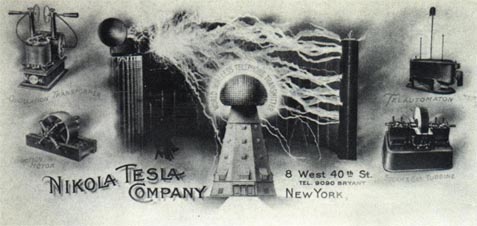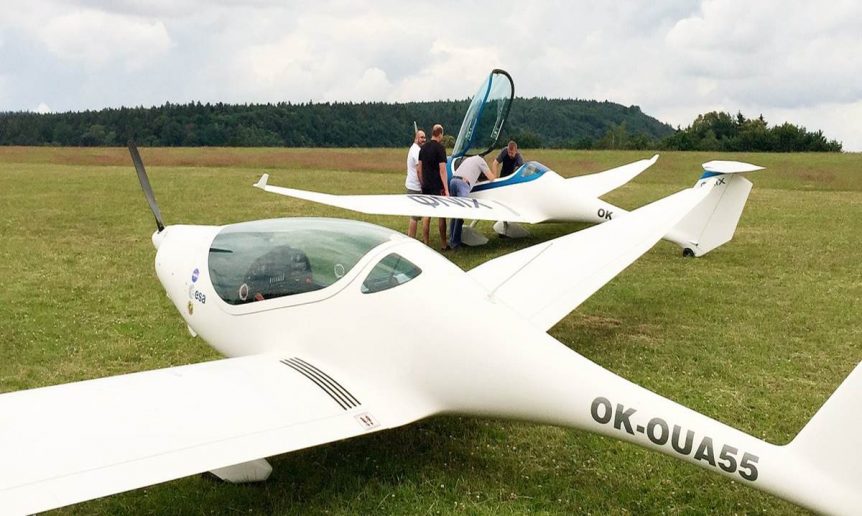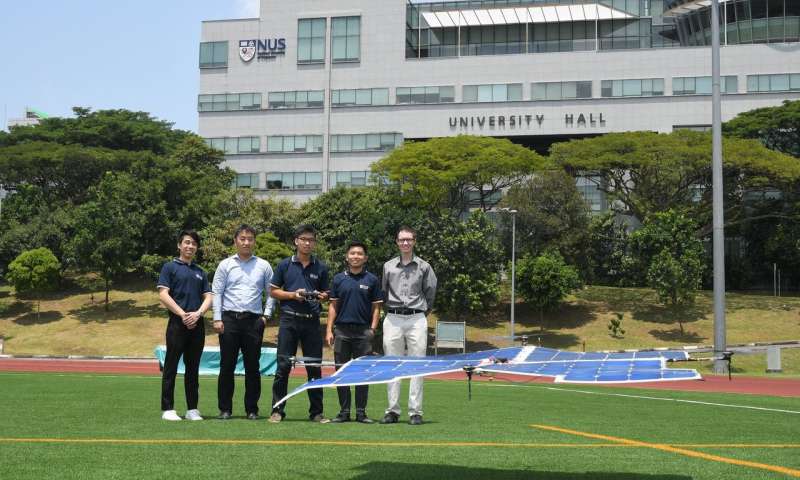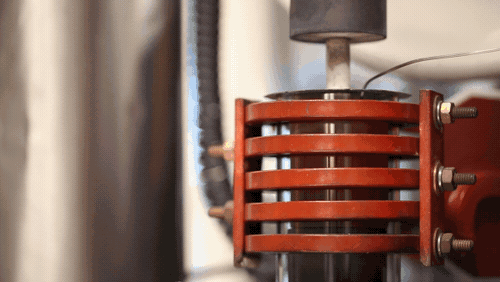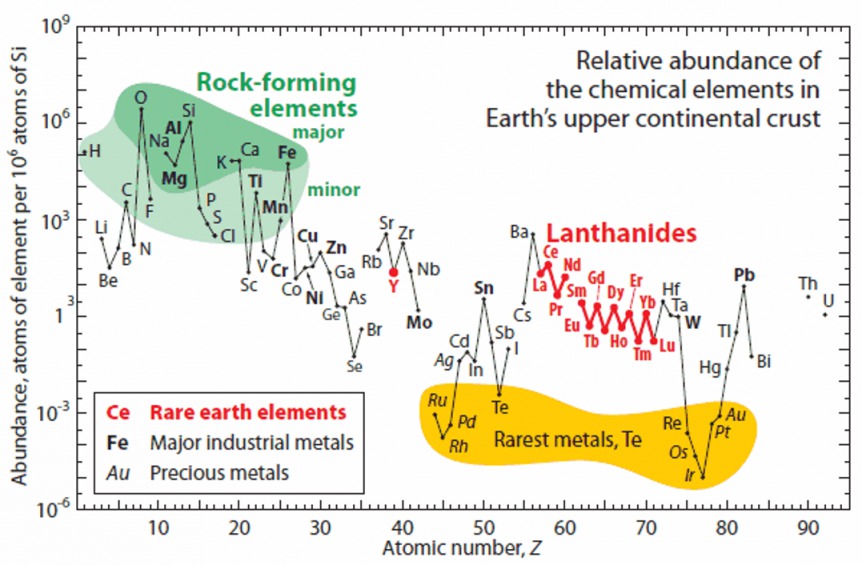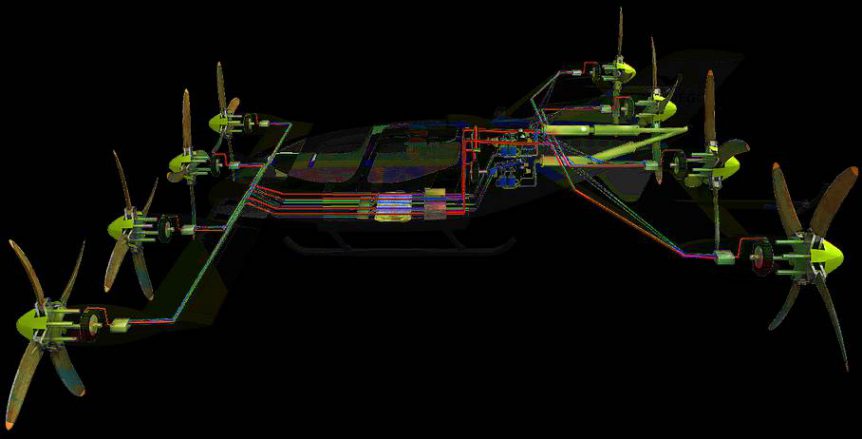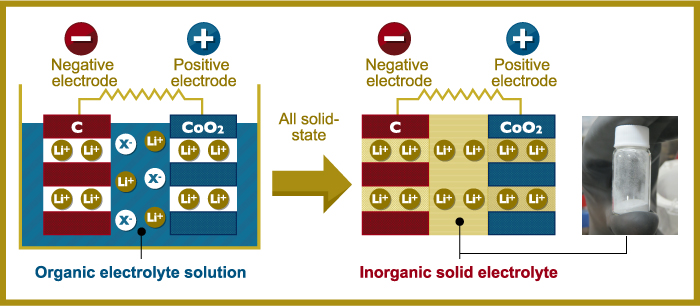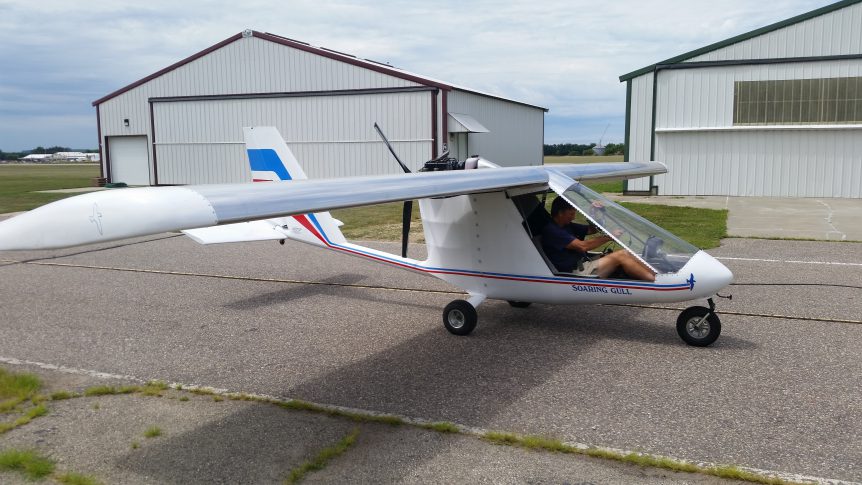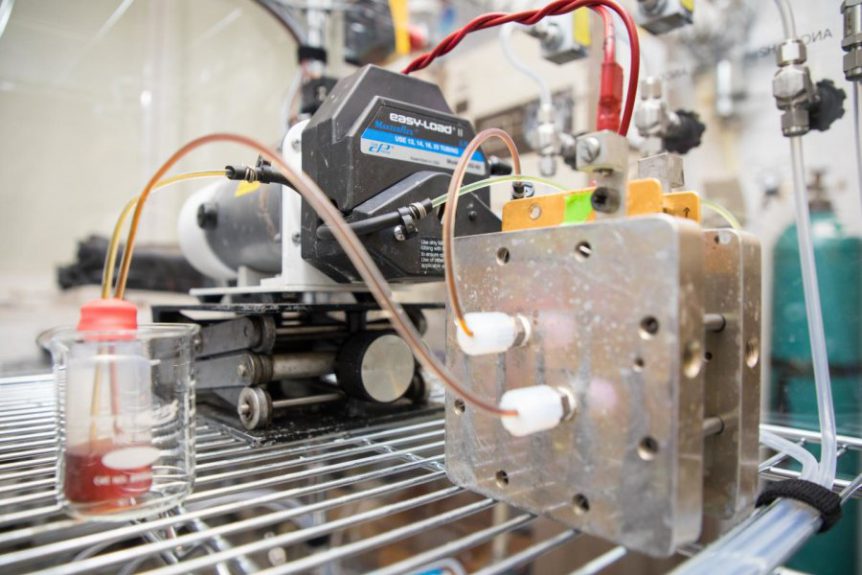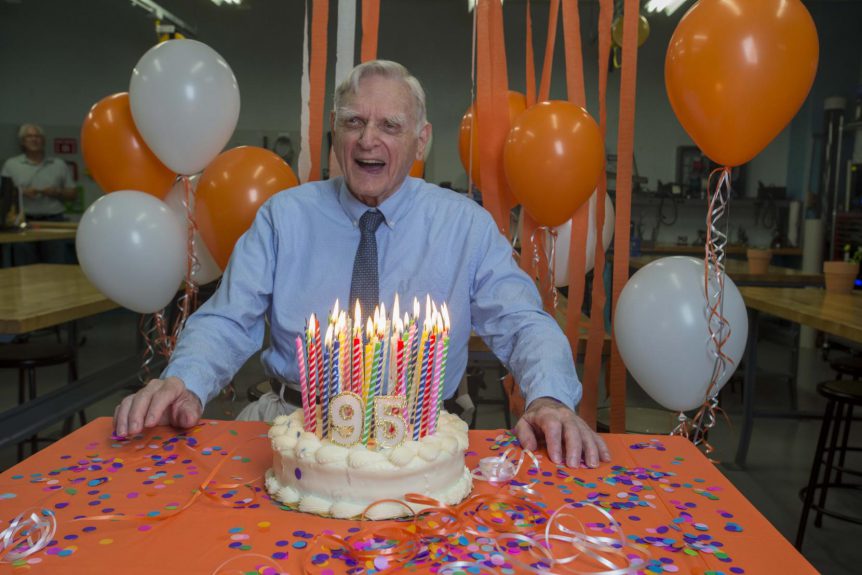In its introduction, Global Energy Transmission Corporation (GET) promises virtually indefinite flight for multi-rotor aircraft. “GET re-invents [the] commercial drone industry providing [a] technical solution to power drones in 24×7 mode around dedicated area[s]. An electrically powered drone can recharge and fly indefinitely via efficient safe high power in-flight rapid recharging in a GET power hotspot. The company’s distance wireless charging technologies uniquely enable drone delivery and many other industrial applications.and many other industrial applications.” This wireless charging concept goes back a long way. Tesla’s Dream In the film The Prestige, key parts center on visits to Nikola Tesla’s laboratory in upstate New York, where the tower that dominates the grounds was one of his dreams. Although never completed in real life, images of its planned form captivated readers and promised endless supplies of electrical energy to the world – with power from Niagara Falls flowing to land and sea wirelessly. Whether even the mighty Niagara could power the world …
The Second SmartFlyer Challenge 2018
Grenchen Airport in Switzerland held the second SmartFlyer Challenge on September 1st and 2nd, with a good showing for the European – and especially the Czech electric aircraft industry. Although smaller in numbers of airplanes than last year’s premier event, the Challenge featured a series of top-drawer presentations by industry leaders, and the viewing of a new Czechoslovokian electric motorglider. A Distinguished Visitor Interest in the event is high in the Canton of Solothurn, the administrative region in which Grenchen resides. The head of the Department of Economics for the Canton, Brigit Wyss, reported on the event in her personal blog. She proclaimed, “Grenchen establishes itself as the European center of electric aviation. The Smartflyer Challenge, which was a novelty a year ago, caught the attention of the representatives of the electrical aviation industry in the second issue. Although fewer aircraft were present than a year ago, the exchange and networking among the actors continued seamlessly. The international character of the …
Solar-Only Quadrotor in Singapore
In their latest adventure in derring-do, a team from the National University of Singapore (NUS) Faculty of Engineering has developed and flown Asia’s first fully solar-powered quadcopter drone. A large framework holds the solar cells, which are the sole means of powering the craft’s four motors. Developers have flown the big square above 10 meters in test flights and achieved controllable flight without the use of batteries. Frogworks Snowstorm This is just the latest in a series of aeronautical exploits by NUS students. In late 2015, they unveiled their Frogworks Snowstorm, a 24-rotor person carrier powered by 2.2 kilowatt (2.94 horsepower) motors driving 76-centimeter (30-inch) propellers. New Asia reported that, “At the London edition of technology event Founders Forum this month, [the Frogworks team] did not imagine that Prince William would end up showing interest in it.” His Royal Highness “spent half an hour sitting in the machine, trying out the controls and talking to the team, according to a …
Solid-State Progress at the University of Michigan
Battery breakthrough: Doubling performance with lithium metal that doesn’t catch fire Longer-lasting drop-in replacements for lithium ion could be on the horizon These two headlines top a report by Angela Wegrecki from the University of Michigan’s News Service, and despite their hopeful vibes, may even elicit yawns. We see similar claims regularly, accompanied by promises of a five-year wait for the production models to begin rolling off the line. Most batteries are developed by researchers working with small budgets and small facilities. Thomas Edison had 40 assistants working with him to test the 1,600 different filaments tried before hitting on a carbonized sewing thread that gave the light he was seeking. The University of Michigan has 2,700 square feet and probably numerous different researchers who want to use that space for different efforts. In that space not much larger than an average American home, scientists are extracting promising results. When the new lab was commissioned in 2015, it was already …
Liquid Batteries for Aircraft?
NASA is investigating “the integration of nanoelectrofuel (NEF) flow batteries with rim-driven electric motors to produce a safe, clean and quiet propulsion system for aircraft,” according to Aviation Week. That is the promise of an early-stage rechargeable liquid battery technology under investigation by NASA. The agency is researching the integration of NEF flow batteries with rim-driven electric motors to produce a safe, clean and quiet propulsion system for aircraft. The rim-driven motors are used on boats as thrusters, and may have applications on small unmanned aircraft, although researchers have seen disappointing results so far. Tying these motors to more promising research into” non-explosive energy storage technology” is part of NASA Armstrong Flight Research Center’s Aqueous Quick-Charging Battery Integration for Flight Research (Aquifer) project, along with NASA Glenn Research Center’s co-principal investigation. A spin-off of research at Argonne National Laboratory and Illinois Institute of Technology, Influit Energy has “developed a novel type of rechargeable battery that features active energy-storing materials in …
VerdeGo’s Integrated Distributed Power System
Erik Lindbergh, grandson of the famed trans-Atlantic flight pioneer, has been paying his dues in aviation for decades, working to involve young people in career-building roles, and advocating for “green” aviation. His latest roles have found him mentoring a group of Embry Riddle students in developing an electric HK-36 (shown last year at AirVenture), and in developing one of the over 100 electric vertical takeoff and landing (eVTOL) potential sky taxis coming into public view. That sky taxi may not make it to market, but Lindbergh and partners’ Integrated Distributed Power system is headed that way. At the 2017 AirVenture, he shared the news that he was working on something exciting. That turned out to be the VerdeGo project, an eight-rotor eVTOL which he developed with co-founder Eric Bartsch and Embry Riddle Director of the Eagle Flight Research Center and Green Flight Challenge competitor Dr. Pat Anderson. Eric is Chief Operating Officer for VerdeGo and Pat is Chief Technology Officer. …
Lowered Resistance, Greater Spontaneity with Solid-State Batteries
Paradoxically, almost every battery breakthrough seems to have an accompanying problem, and battery developers end up sometimes ditching the positive because of an overriding negative. Solid-state batteries promise some gains without compromise, though. Conventional lithium-ion batteries have possibly reached the limit of their capacity, some scientists fear, and still remain prone to issues like thermal runaway. Developers have looked at solid-state battery designs in which even the electrolyte is solid and not prone to bursting into flame. These batteries promise to have higher energy densities and longer lives, but high resistance at the electrolyte-electrode interface tends to interfere with charging and discharging speeds. Two groups of researchers at the Tokyo Institute of Technology have been taking different approaches to creating a solid-state battery with improved performance and few of the disadvantages of more conventional lithium cells. Stacking Battery Components Scientists from Tokyo Institute of Technology and Tohoku University, led by Professor Taro Hitosugi, “Fabricated all-solid-state batteries with extremely low interface …
Coots and e-Gulls at Oshkosh
Lead image shows Mark Beierle in the Soaring Gull of his design with which he accompanied Richard Steeves to Oshkosh. As many readers know, Richard Steeves, a physician and teacher at the University of Wisconsin – Madison is also a builder and long-time advocate for an amphibious aircraft called the Coot. He publishes the Coot Builders Newsletter and stages a recurring AirVenture event, a yearly get-together of fellow Coot builders. Recently, he got into electric aviation and has built and flies Bravo, an e-Gull designed by Mark Beierle. Richard’s newsletter now features articles about amphibians and electric flight. Mark showed up at Richard’s hangar at the Sauk Prairie Airport, a lovely stretch of green bordered by hangars and bisected by a concrete runway pointing south toward Madison and north toward the Wisconsin Dells. Beierle “worked very methodically and precisely to optimize Bravo beyond my dreams,” according to Richard. The Coot Builder’s Newsletter reports, “Mark Beierle showed up at the Sauk …
Flow Batteries Aging Well
As previously noted in the blog, the Tissandier Brothers flew their Siemens-powered electric airship in 1883 using a flow battery of their own design for energy storage. This technology gets a lot of attention for grid-based energy storage, but might have use in more mobile applications. Nano Flow Cell Technologies in Switzerland, for instance, used different salt waters to power their Quant and Quantino automobiles. Howard Handelman, a regular reader of the blog, shared the following two researches into modernizing flow cells. Stanford and Harvard researchers both cooked up different ingredients than one would normally find in a flow battery. Both groups achieved better than average performance and longevity. Stanford’s Liquid Metal Approach Stanford’s battery uses liquid metal that more than doubles the maximum voltage of conventional flow batteries. Things happen at normal temperatures, unlike flow batteries that need extremely high temperatures. The metals used are low-cost and non-toxic, unlike the dangerous fluids used in other flow batteries. William Chueh, …
John Goodenough’s Counterintuitive Battery
A Long and Productive Life On his 96th birthday today, John Goodenough and his research team’s latest findings are the subject of much speculation. He, fellow scientist Maria Braga, and his research team have created a battery claimed to be three times as energy dense as existing lithium-ion contemporaries, but exhibiting the counterintuitive property of improving with repeated charging cycles. Goodenough’s career began in 1943 (a year after your editor was born) with the award of his bachelor’s degree in mathematics from Yale University, followed his master’s and Ph.D. in physics from the University of Chicago in 1951 and 1952 respectively. He worked at MIT and in 1976, left to become head of Oxford University’s Inorganic Chemistry Laboratory from 1976 to 1986. In 1986, he assumed the Virginia H. Cockrell Centennial Chair in Engineering at the University of Texas at Austin, at an age where most men are cashing in their 401k’s. Texas Monthly comments on the counterintuitive nature of …

